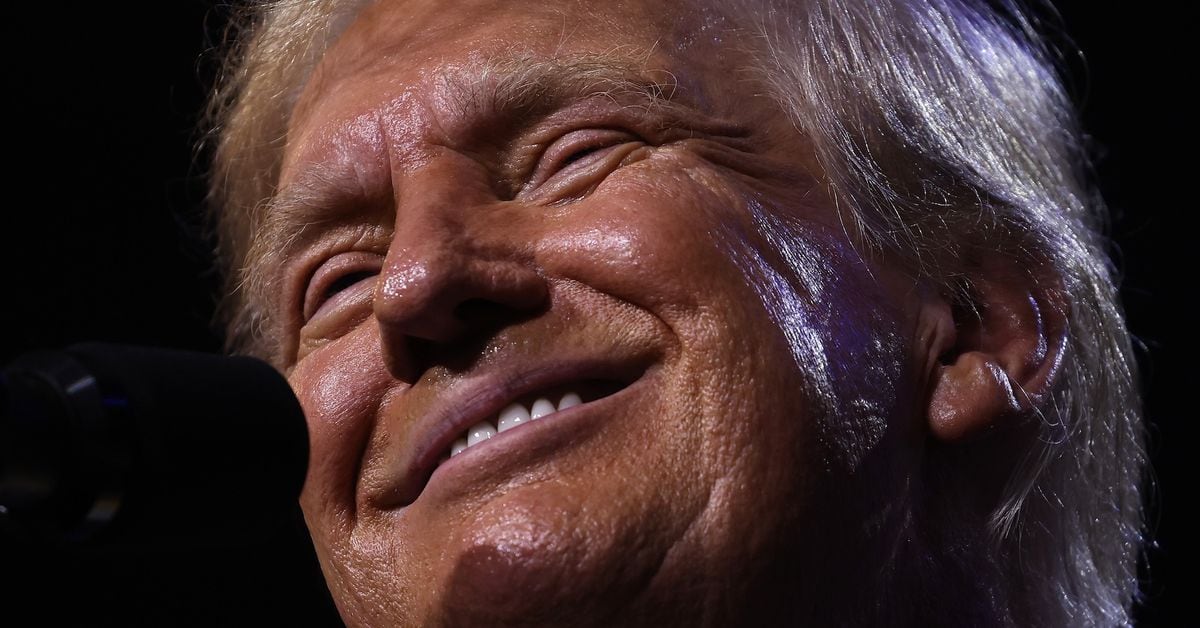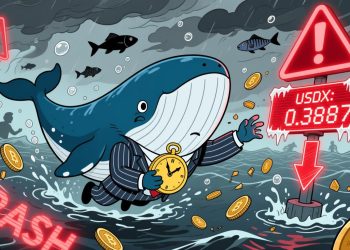Do prediction markets have a pro-Trump bias? Or do they just put a premium on the front-runners?
Trump and Biden will likely debate, while Trump won’t be charged with another felony, Polymarket prices signal.
Kalshi bettors place Coinbase volume above last quarter’s.
If traders on Polymarket are right, and there’s $165 million bet on the question, the 2024 U.S. presidential election will be a blowout for the ages.
With a 56% chance of winning, former president Donald Trump has a 22-percentage-point lead over incumbent Joe Biden, according to the crypto-based platform’s officially non-American bettors (as part of a settlement with the Commodity Futures Trading Commission, Polymarket agreed to geo-block U.S.-based users). Contrast that to an aggregate of polls prepared by Nate Silver’s FiveThirtyEight, which gives Trump a mere one-point lead.
Some might be quick to attribute the huge gap to the fact that Polymarket users are, by definition, crypto users, and therefore might be biased toward him. They might note that on PredictIt, a more traditional prediction market platform settled in U.S. dollars, Trump is leading 50-45: Still a wider margin than the polls, but nowhere near as dramatic as only Polymarket.
Trump, after all, is the pro-crypto candidate. There’s also the crypto community’s love of a troll: Trump-themed “PoliFi” tokens have a higher market cap than their Biden counterparts.
On the other hand, these traders are betting on what will happen, not what they want to happen. So they are highly incentivized to research and make informed decisions, regardless of their political preferences. In theory, at least, these markets should be a more reliable gauge of sentiment than polling, and perhaps a superior forecasting method as well.
Indeed, Ryan Selkis, founder of crypto research outfit Messari, claimed in a recent tweet that the Trump campaign has been giving their candidate Polymarket numbers on top of the usual polling readout, because the team is heavily skeptical of polls in general.
Remember: in prediction markets, those who bet on the correct outcome receive $1 per share, while those who bet wrong get nothing, with share prices reflecting probabilities. A share trading at 40 cents indicates a 40% chance of success, for example.
Another, more banal explanation of Trump’s outsized odds on Polymarket is that traders there tend to put a high premium on any leading candidate, way ahead of the polls.
Look at other recent elections where there was a gulf between Polymarket and the polls.
Ahead of Taiwan’s Jan. 13 election, Polymarket gave the Democratic Progressive Party’s Lai Ching-te a 60% to 70% chance of winning, even though his polling numbers were only in the high 20s to low 40s. Lai won with 40% of the vote.
In the run-up to Indonesia’s election in February, Polymarket put Prabowo Subianto’s chances of winning in the high 70s, while his polling numbers were in the high 50s. He won with 55%.
There are a lot of other factors at play in Trump’s high odds on Polymarket. Traders are heavily discounting independent candidate Robert F. Kennedy, Jr. at around 2% probably, while 538’s poll aggregation has him closer to 9%. Similarly, in Taiwan’s, the presence of a third-party potential spoiler in the form of the newly established People’s Party, led by Taipei’s former mayor Ko Wen-je, added some complexity to the model as Polymarket gave the TPP lower probability than its polling numbers.
So is the Polymarket premium a predictive force or an online flex for Trump fans? We’ll have much better data to answer that question after the November ballot result.
Trump, ever the showman, is said to be thrilled about taking the stage against Biden for the first Presidential election debate scheduled for later this month. So thrilled that his campaign is calling for more: four debates as opposed to the two proposed by the Biden camp.
There’s a growing narrative, however, that Trump will ghost the debates entirely if he doesn’t get his way about formats and other specifics.
In an interview in late May, Democratic strategist James Carville suggested that Trump won’t show up to the debates if he doesn’t think doing so is in his own self-interest.
“I don’t think Trump will go to the debate,” Carville said in an interview with neoconservaitve commentator Bill Kristol. “He doesn’t do anything that’s not in his perceived self-interest, and this is one of these things where he could hurt — Biden has a chance to help himself.”
The market seems to be dismissing Carville’s prediction, giving the debate a 77% chance of going on as scheduled.
Meanwhile, news that Trump’s other felony trials are stuck in bureaucratic limbo means that the market is only pricing in a 14% chance that he’ll appear before a court – and be convicted again – prior to the election in November.
Coinbase is set to report quarterly earnings on June 14, and a closely watched metric will be the crypto exchange’s trading volume, a measure of retail investors’ market participation.
Coinbase, of course, isn’t all retail. It has a large institutional business, but the licensed exchange with reliable banking on- and off-ramps is a bellwether for retail trading. Its mobile app’s position in Apple’s top 100 free app section has been a popular indicator of retail’s participation in the crypto market.
Over at Kalshi, the lone U.S.-regulated prediction market platform, a contract asking bettors to forecast Coinbase’s trading volume has it coming in at $174 billion, higher than the $154 billion Coinbase posted at the end of its last quarter in February.
With the wreckage of FTX cleaned up, a big narrative trend has been the institutionalization of crypto.
There’s a lot to be said as to why this is a positive development for crypto, as endorsements by the world’s largest fund managers, such as BlackRock and Fidelity, in the form of exchange traded fund (ETF) products are an indicator that the asset class isn’t a fly-by-night operation ready to rug pull investors.
At the same time, it can be argued that a heavily institutionalized asset class is antithetical to the vision of Satoshi Nalamoto, who wrote the bitcoin white paper in the aftermath of the 2008 financial crisis when these same institutions torpedoed the global economy.
In the time since Coinbase’s last earnings report, bitcoin is up around 45%, according to CoinDesk Indices data. Kalshi bettors are plotting just a 13% increase in Coinbase’s trading volume for the same period. Whom are the spoils of this bull market going to?

























